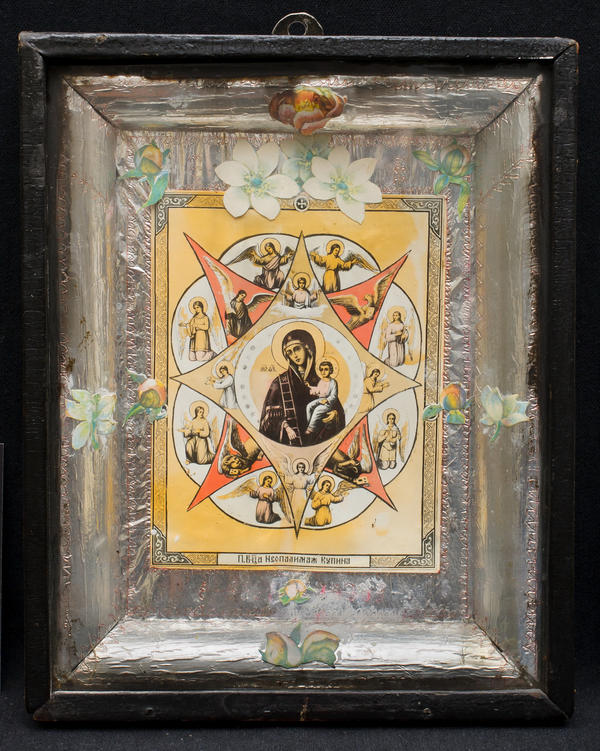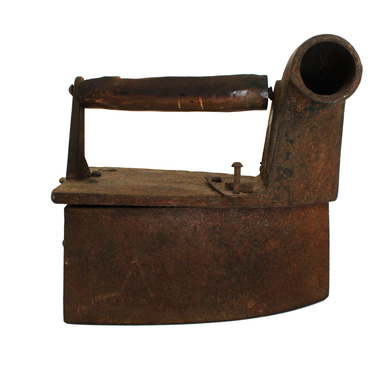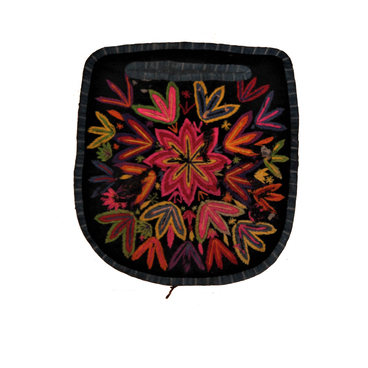The story of the Burning Bush, one of the world’s most ancient, is told in the Old Testament. One day, Moses, at that time a regular shepherd, was tending sheep in the desert when, all of a sudden, he noticed a fire in the distance. Having come closer, the shepherd saw a miracle, “though the bush was on fire it did not burn up.” “<…> the Lord appeared to him in flames of fire from within a bush.” He gave Moses instructions on how to free the Israelites from Egyptian captivity. Later, the bush which burned in unearthly flames was named the Burning Bush.
This episode marked the immaculate conception of Christ by the Mother of God through the power of the Holy Spirit. The image of the bush on fire which did not burn up can also be explained differently. Born on sinful Earth, the Mother of God, was free from sin herself. This Old Testament image can be found in church chants: “As the bush does not burn up, the Virgin gave birth to you.” The imagery was also made into an icon “Burning Bush”.
Its central character is the Virgin Mary holding the Son of God with her left hand and clasping a ladder with her right hand which refers to the descent of Jesus Christ to sinful Earth. Another function of the ladder in the hand of Blessed Virgin is the ascension of humanity from the earth to heaven. Apart from that, the ladder may denote that the Son of God came down to earth through the Virgin Mary.
The Mother of God is surrounded by the eight-pointed star made up of two quadrangles. One of them is painted red to symbolise fire. The other one is green referring to the mysterious bush. Celestial forces ruled by Blessed Virgin are also depicted. These are archangels and angels of thunder, wind, lightning, rain, dew, frost and haze.
In past centuries, most Orthodox families had the Burning Bush icon in their homes. It was traditionally placed above the entrance door. They believed that, placed above the entrance, the icon protected the entire home and, thus, all members of the family residing there, for the Mother of God is a preserver of home safety The Virgin Mary also patronizes those whose job is to save lives: firefighters, doctors, military men.
The Icon “Our Lady Burning Bush” was handed to the museum by Marina Pityova in 2001. Currently, the icon is exhibited in the interior of a peasant hut.
This episode marked the immaculate conception of Christ by the Mother of God through the power of the Holy Spirit. The image of the bush on fire which did not burn up can also be explained differently. Born on sinful Earth, the Mother of God, was free from sin herself. This Old Testament image can be found in church chants: “As the bush does not burn up, the Virgin gave birth to you.” The imagery was also made into an icon “Burning Bush”.
Its central character is the Virgin Mary holding the Son of God with her left hand and clasping a ladder with her right hand which refers to the descent of Jesus Christ to sinful Earth. Another function of the ladder in the hand of Blessed Virgin is the ascension of humanity from the earth to heaven. Apart from that, the ladder may denote that the Son of God came down to earth through the Virgin Mary.
The Mother of God is surrounded by the eight-pointed star made up of two quadrangles. One of them is painted red to symbolise fire. The other one is green referring to the mysterious bush. Celestial forces ruled by Blessed Virgin are also depicted. These are archangels and angels of thunder, wind, lightning, rain, dew, frost and haze.
In past centuries, most Orthodox families had the Burning Bush icon in their homes. It was traditionally placed above the entrance door. They believed that, placed above the entrance, the icon protected the entire home and, thus, all members of the family residing there, for the Mother of God is a preserver of home safety The Virgin Mary also patronizes those whose job is to save lives: firefighters, doctors, military men.
The Icon “Our Lady Burning Bush” was handed to the museum by Marina Pityova in 2001. Currently, the icon is exhibited in the interior of a peasant hut.



